The Intel Core i9-14900KS is a desktop processor with 24 cores, launched in March 2024, at an MSRP of $689. It is part of the Core i9 lineup, using the Raptor Lake Refresh architecture with Socket 1700. Intel Hyper-Threading technology is available and effectly doubles the core-count of the P-Cores, to a total of 32 threads. Core i9-14900KS has 36 MB of L3 cache and operates at 3.2 GHz by default, but can boost up to 6.2 GHz, depending on the workload. Intel is making the Core i9-14900KS on a 10 nm production node, the transistor count is unknown. You may freely adjust the unlocked multiplier on Core i9-14900KS, which simplifies overclocking greatly, as you can easily dial in any overclocking frequency.
With a TDP of 150 W, the Core i9-14900KS is extremely power hungry, which means you need top-notch cooling. Intel’s processor supports DDR4 and DDR5 memory with a dual-channel interface. ECC memory is supported, too, which is an important capability for mission-critical systems, to avoid data corruption. For communication with other components in the computer, Core i9-14900KS uses a PCI-Express Gen 5 connection. This processor features the UHD Graphics 770 integrated graphics solution.
Hardware virtualization is available on the Core i9-14900KS, which greatly improves virtual machine performance. Additionally, IOMMU virtualization (PCI passthrough) is supported, so that guest virtual machines may directly use host hardware. Programs using Advanced Vector Extensions (AVX) can run on this processor, boosting performance for calculation-heavy applications. Besides AVX, Intel is including the newer AVX2 standard, too, but not AVX-512.
With a TDP of 150 W, the Core i9-14900KS is extremely power hungry, which means you need top-notch cooling. Intel’s processor supports DDR4 and DDR5 memory with a dual-channel interface. ECC memory is supported, too, which is an important capability for mission-critical systems, to avoid data corruption. For communication with other components in the computer, Core i9-14900KS uses a PCI-Express Gen 5 connection. This processor features the UHD Graphics 770 integrated graphics solution.
Hardware virtualization is available on the Core i9-14900KS, which greatly improves virtual machine performance. Additionally, IOMMU virtualization (PCI passthrough) is supported, so that guest virtual machines may directly use host hardware. Programs using Advanced Vector Extensions (AVX) can run on this processor, boosting performance for calculation-heavy applications. Besides AVX, Intel is including the newer AVX2 standard, too, but not AVX-512.
Physical
| Socket: | Intel Socket 1700 |
|---|---|
| Foundry: | Intel |
| Process Size: | 10 nm |
| Die Size: | 257 mm² |
| Package: | FC-LGA16A |
| tJMax: | 100°C |
Processor
| Market: | Desktop |
|---|---|
| Production Status: | Active |
| Release Date: | Mar 14th, 2024 |
| Launch Price: | $689 |
| Part#: | SRN7R |
| Bundled Cooler: | None |
Performance
| Frequency: | 3.2 GHz |
|---|---|
| Turbo Clock: | up to 6.2 GHz |
| P-Core Boost 3.0: | up to 5.9 GHz |
| P-Core Turbo: | 5.6 GHz |
| E-Core Frequency: | 2.4 GHz up to 4.5 GHz |
| Base Clock: | 100 MHz |
| Multiplier: | 32.0x |
| Multiplier Unlocked: | Yes |
| TDP: | 150 W |
| PL1: | 320 W |
| PL2: | 320 W |
| PL2 Tau Limit: | Unlimited |
Architecture
| Codename: | Raptor Lake-R |
|---|---|
| Generation: | Core i9 (Raptor Lake Refresh) |
| Memory Support: | DDR4, DDR5 |
| DDR4 Speed: | 3200 MT/s |
| DDR5 Speed: | 5600 MT/s |
| Memory Bus: | Dual-channel |
| ECC Memory: | Yes |
| PCI-Express: | Gen 5, 16 Lanes (CPU only) |
| Secondary PCIe: | Gen 4, 4 Lanes |
| Chipsets: | Intel 600 Series, Intel 700 Series |
Core Config
| # of Cores: | 24 |
|---|---|
| # of Threads: | 32 |
| Hybrid Cores: | P-Cores: 8 E-Cores: 16 |
| SMP # CPUs: | 1 |
| Integrated Graphics: | UHD Graphics 770 |
Cache
| Cache L1: | 80 KB (per core) |
|---|---|
| Cache L2: | 2 MB (per core) |
| Cache L3: | 36 MB (shared) |
| E-Core L1: | 96 KB (per core) |
| E-Core L2: | 4 MB (per module) |
Features
|
Notes
| Intel UHD Graphics Dynamic Frequency: 300-1650MHz |

 MacBook
MacBook iPad
iPad Apple Watch
Apple Watch Airpods
Airpods iMac
iMac Studio Display
Studio Display iphone
iphone
 Gaming Laptop
Gaming Laptop

 Gaming Desktop
Gaming Desktop
 DDR5 Desktop
DDR5 Desktop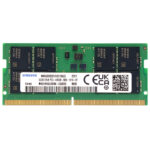 DDR5 Laptop
DDR5 Laptop DDR5 Server
DDR5 Server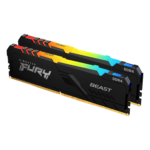 DDR4 Desktop
DDR4 Desktop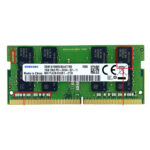 DDR4 Laptop
DDR4 Laptop DDR4 Server
DDR4 Server DDR3 Desktop
DDR3 Desktop DDR3 Laptop
DDR3 Laptop DDR3 Server
DDR3 Server
 Intel Socket
Intel Socket Intel Z890
Intel Z890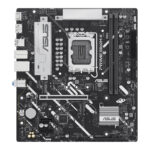 Intel B860
Intel B860 Intel B760
Intel B760 Intel H770
Intel H770 Intel B660
Intel B660 Intel H670
Intel H670 Intel H610
Intel H610 Intel Z690
Intel Z690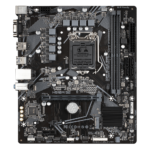 Intel H510
Intel H510 Intel Z590
Intel Z590 Intel B560
Intel B560 Intel H470
Intel H470 Intel Z490
Intel Z490 Intel H410
Intel H410 Intel B460
Intel B460 Intel H310
Intel H310 Intel B360
Intel B360 Intel B365
Intel B365 Intel X299
Intel X299 Intel Z390
Intel Z390 Intel Z370
Intel Z370 Intel H370
Intel H370 Intel Z270 H270
Intel Z270 H270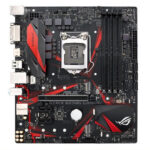 Intel B250
Intel B250 Intel Z170 H170
Intel Z170 H170 Intel H110
Intel H110 Intel H81
Intel H81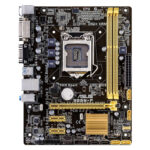 Intel B85
Intel B85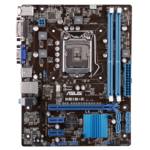 Intel H61
Intel H61 Intel B150
Intel B150 AMD Socket
AMD Socket AMD B850
AMD B850 AMD B840
AMD B840 AMD TRX50
AMD TRX50 AMD A620
AMD A620 AMD X870
AMD X870 AMD B650
AMD B650 AMD A520
AMD A520 AMD TRX40
AMD TRX40 AMD B550
AMD B550 AMD X570
AMD X570 AMD X470
AMD X470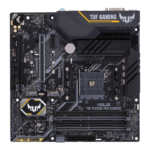 AMD B450
AMD B450 AMD X370
AMD X370 AMD A320
AMD A320 AMD B350
AMD B350 AMD X399
AMD X399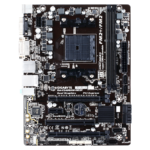 AMD A88
AMD A88 AMD A68 A78
AMD A68 A78
 Cpu Air Coolers
Cpu Air Coolers CPU Liquid Coolers
CPU Liquid Coolers Fans
Fans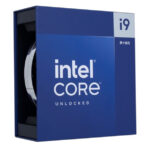
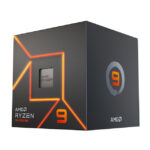 AMD CPUs Desktop
AMD CPUs Desktop AMD Server CPU
AMD Server CPU Intel Server CPU
Intel Server CPU Samsung CPUs
Samsung CPUs Other special CPUs
Other special CPUs

 Solid State Drives
Solid State Drives NVMe PCIe M.2
NVMe PCIe M.2 SATA 2.5inch
SATA 2.5inch Hard Disk Drive
Hard Disk Drive Server Hard Drives
Server Hard Drives NAS hard drive
NAS hard drive Monitoring hard drive
Monitoring hard drive Portable Solid State Drives
Portable Solid State Drives Memory Cards
Memory Cards USB Flash Drives
USB Flash Drives
 Nvidia GPU
Nvidia GPU RTX 50 series
RTX 50 series RTX 30 series
RTX 30 series GTX 16 series
GTX 16 series GTX 10 series
GTX 10 series RX 9000 series
RX 9000 series RX 7000 series
RX 7000 series RX 6000 series
RX 6000 series RX 5000 series
RX 5000 series RX 500 series
RX 500 series RTX 20 series
RTX 20 series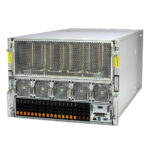
 Rack server
Rack server Blade server
Blade server Tower server
Tower server Storage Server Solutions
Storage Server Solutions Network switch
Network switch
 Workstation
Workstation Mobile Workstation
Mobile Workstation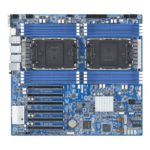
 Server motherboard
Server motherboard Workstation Motherboard
Workstation Motherboard
PSP3000索尼原装街机掌机-150x150.jpg) SONY Gaming Console
SONY Gaming Console ASUS Gaming Console
ASUS Gaming ConsoleLegion-Go-游戏掌机手持设备-150x150.jpg) Lenovo Gaming Console
Lenovo Gaming Console One XPlayer
One XPlayer日版-Xbox-Series-X-XSX次世代-150x150.jpg) Microsoft Gaming Console
Microsoft Gaming Console XBOX Gaming Console
XBOX Gaming ConsoleMSI-Claw-A1M-050US-游戏掌机-150x150.jpg) MSI Gaming Console
MSI Gaming Console
 Motherboard
Motherboard GTX TITAN
GTX TITAN Computer Cases
Computer Cases












Reviews
Clear filtersThere are no reviews yet.